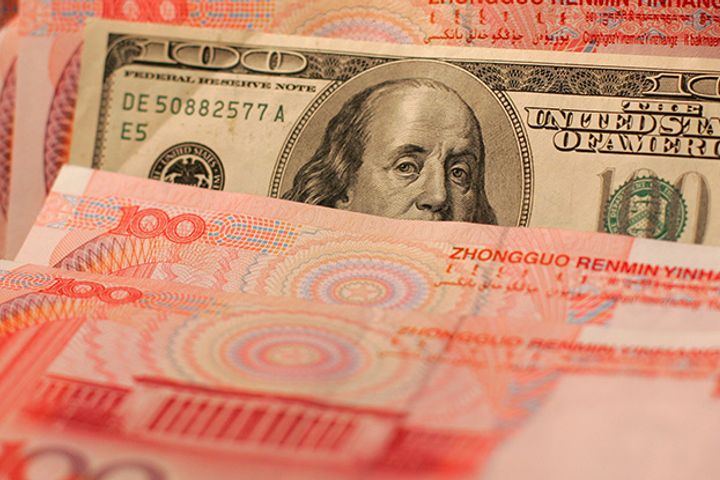 Banks Decide Countercyclical Coefficient in Calculation of Their Yuan-Dollar Exchange Rate, PBOC Says
Banks Decide Countercyclical Coefficient in Calculation of Their Yuan-Dollar Exchange Rate, PBOC Says(Yicai Global) Jan. 10 -- The countercyclical coefficient used to calculate the countercyclical factor is independently determined by banks that provide quotes for the yuan-dollar exchange rate, said China's central bank. PBOC was responding to some media reports that it has asked the banks to adjust their use of countercyclical factor in the calculation of the yuan's central parity rate against the greenback.
Quoting banks decide whether or not to adjust the countercyclical coefficient in their models based on degrees of pro-cyclicality in the foreign exchange market and changes in fundamentals such as the macro economy, the People's Bank of China said.
China's central bank has recently notified some of the quoting banks to adjust their use of the countercyclical factor in the mechanism so that there will be no countercyclical adjustments, Bloomberg reported yesterday, quoting a source. The onshore yuan closed at 6.5207 against the dollar on the news yesterday, down 251 basis points from the official closing price on the previous day and down 223 basis points from the night-session closing price on the same day.
China added a countercyclical factor to the yuan's daily fixing mechanism last May in a bid to offset the impact of market sentiment and lessen possible 'herd effects' as a result of the yuan's one-way rise or fall.
The countercyclical factor is a system formula that includes some exogenously determined parameters and factors. Its introduction adds some regulatory factors to the correlation between the yuan's midpoint and its changes against a basket of currencies traded in the China Foreign Exchange Trade System, giving the central bank more control over the daily fixing, a financial institution employee told online portal Sina Finance.
Since changes in the yuan's exchange rates against a basket of currencies during the daytime will also be considered, the introduction of the countercyclical factor could marginally weaken the impact of the yuan's closing price and lessen possible disturbances as a result of trading inertia, he added.
The central bank had, in effect, stopped intervening in the yuan's foreign exchange market for an extended period of time after the currency reform in August 2015, and the yuan was largely stable against a basket of currencies traded in CFETS, analysts noted. However, problems also emerged such as the yuan's one-way depreciation and continued volatility. To reduce market volatility, the central bank introduced the countercyclical factor in a bid to rein in the foreign currency market in a targeted manner.
Following the introduction of the counter-cyclical factor and given a persistently weak dollar, there has been a substantial reversal in the yuan's depreciation trend and in the market expectation for yuan depreciation. The exchange rate of yuan against the dollar dropped to about 6.5 late last year as the yuan rallied amid fluctuations, compared with around 6.9 in early May last year. The Chinese currency eventually rose to 6.72 percent against the dollar last year, with its central parity rate up 6.16 percent.
The removal of the countercyclical factor could mean increased volatility in the yuan and indicates the central bank's confidence about the currency's future movement, market participants said. That China's foreign reserves have increased for 11 months in a row also provides confidence for the central bank to take the initiative.